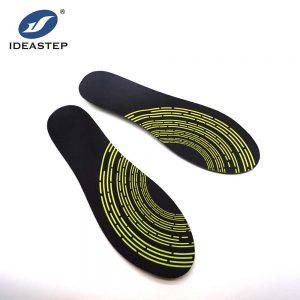
When choosing outdoor insoles, there are several factors to consider to ensure you select the right ones for your needs. Here are some guidelines to help you choose outdoor insoles:
- Activity and terrain: Consider the specific outdoor activities you’ll be engaging in and the type of terrain you’ll encounter. Different activities and terrains require different levels of support, cushioning, and stability. For example, if you’re hiking on rugged trails, you may need insoles with extra arch support and shock absorption.
- Arch type: Determine your foot arch type – high, medium, or low. This will help you choose insoles that provide appropriate arch support. High arches may require more cushioning, while low arches may need additional support to maintain proper foot alignment.
- Cushioning and shock absorption: Evaluate the level of cushioning and shock absorption you desire. Insoles with thicker cushioning are suitable for activities that involve high impact, such as running or jumping, while thinner insoles may be sufficient for less intense activities.
- Fit and sizing: Ensure that the insoles you choose fit properly in your shoes. Most insoles come in standard sizes, but some can be trimmed to fit your specific shoe size. It’s important to follow the manufacturer’s sizing guidelines to ensure a proper fit.
- Moisture-wicking and breathability: If you anticipate your feet getting sweaty during outdoor activities, look for insoles with moisture-wicking properties. These will help keep your feet dry and prevent discomfort, odor, and potential fungal or bacterial growth.
- Durability: Consider the durability of the insoles, especially if you plan to use them frequently or for demanding outdoor activities. Look for insoles made from durable materials that can withstand the rigors of outdoor use.
- Personal preferences and needs: Take into account any specific foot conditions or preferences you have. For example, if you have plantar fasciitis, you may need insoles with extra heel support. If you prefer a specific material, such as gel or foam, choose insoles that meet your preferences.
It’s important to note that everyone’s feet are unique, so it’s recommended to try out different insoles and consult with a podiatrist or footwear specialist for personalized recommendations based on your specific needs and foot characteristics.
Related insoles selling links: https://www.aideastep.com/product/shock-absorption-and-accommodation-pu-outdoor-insole/.
